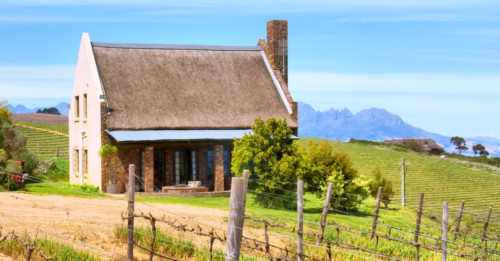Born in the Loire Valley of France, Chenin Blanc is a white wine grape with reported tracings as far back as the ninth century. Initially, it was cultivated by the French to make sparkling and dessert wines. But in recent history, the grape’s versatility and popularity spread to other wine growing regions both in cool and warm climates. Today, Chenin Blanc has a reputation for producing high-quality dry wines, some of which can age for decades.
Chenin Blanc in 60 Seconds
- Chenin Blanc has high acidity, making it a versatile grape for producing a variety of styles from still, dry, and sparkling wines to well-balanced sweet wines.
- More than 50 percent of the world’s Chenin Blanc vineyards are in South Africa, where the grape is historically known as Steen.
- Chenin Blanc is the most widely planted grape variety in South Africa.
- Chenin Blanc is one of the few white wines that can undergo malolactic fermentation and/or oak aging during the winemaking process.
The Different Styles of Chenin Blanc
Chenin Blanc exhibits a spectrum of flavors and characteristics, which are largely dependent on the choices of the winemaker and the climate of the region where grapes were grown.
Dry Chenin Blanc
When all of the grape’s natural sugars have finished fermenting into alcohol, the resulting dry Chenin Blanc offers a lean and mineral profile with flavors of yellow and green fruit. In cooler sub-regions, like Anjou in the Loire Valley, the wine also expresses sweet floral notes, like honeysuckle and chamomile. Dry Chenin Blanc is also made in warmer climates like Stellenbosch in South Africa or Margaret River in Australia, where notes of melon and tropical fruit accent the wine’s fresh and zesty profile.
Off-Dry And Sweet Chenin Blanc
Sweetness in wine is obtained by using botrytis affected grapes or by not fermenting all of the grape’s natural sugars during the winemaking process. Natural sugars in Chenin Blanc express rich flavors of ripe pear and passionfruit, and offer notes of honey and ginger. These styles are more common in parts of the Loire Valley versus other parts of the world — particularly in Vouvray, which is in Touraine on the north side of the River Loire. Here, producers make sweet expressions but only if vintage conditions oblige. Luscious styles made from grapes that are affected by botrytis or noble rot are highly sought after from appellations like Quarts de Chaume and Bonnezeaux on the south side of the River Layon.
Sparkling Chenin Blanc
Much like other styles of sparkling wine, Chenin Blanc arrives in a range of sweetnesses, from dry (Brut) to sweet (Demi-Sec). Sparkling expressions have similar flavors to dry, still Chenin Blanc, with yellow apple and green pear typical tasting notes. Quince, white plum, and floral notes are also common. Given Chenin Blanc’s French heritage, versions from Vouvray in the Loire are made using the traditional method, with a minimum of nine months spent aging on its lees. The traditional method is also used to make sparkling Chenin in South Africa, where the winemaking method is referred to as cap classique.
How Chenin Blanc Made Its Way To South Africa
Many believe that Chenin Blanc was brought to South Africa by Jan Van Riebeeck, a Dutch navigator who helped colonize Cape Town in the early 17th century. He brought a Chenin vine from France in 1655 and planted it at his home vineyard.
The grape’s high acidity and ease of growth caused it to spread across the country, becoming the largest planted white wine in the region. Initially, producers primarily used Chenin Blanc to make brandy, but that changed in the late twentieth century when South Africa started coming into its own as a well respected wine region. Winemakers began experimenting with the grape and were able to create a dry, zesty, crisp wine that is very similar to Pinot Grigio and Sauvignon Blanc. It was a hit and South African quickly became the largest producer of Chenin Blanc across the globe.
How To Pair Chenin Blanc With Food
The inherent acidity in Chenin Blanc makes it an all-around great choice to pair with food. Yet, the wide range of styles should be taken into account when picking the perfect dish. For dry, still versions of Chenin Blanc, aim for light dishes such as fish, roast chicken, or grain salads. If the wine has been aged in oak, then it can match with a slightly heartier meal, like pork or a root vegetable winter soup. A medium-dry or sweet Chenin Blanc is a great match for Asian cuisine or something with a spicy kick, like paella.
